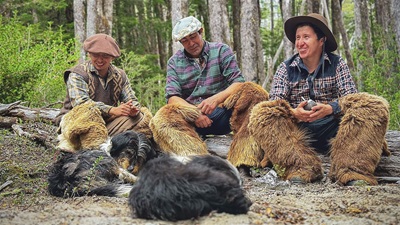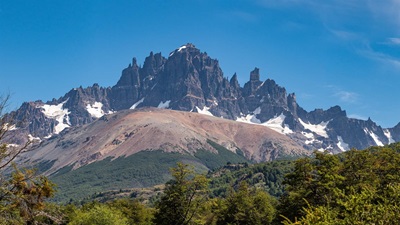Chilean Patagonia Community Seeks to Create New Conservation Area
The goal is to protect public land while safeguarding the traditional life of Patagonian cowboys

During a recent tour retracing the path of the pioneers who traveled to Chilean Patagonia a little over a century ago, Marcelo Vásquez reflected on the area’s history and the special meaning it holds for him and his family.
“Being here deepens our appreciation for what our great-grandparents did when they came here and established our families’ homeland in this border area,” he said as he looked out at Patagonia’s pristine forests from the foot of a stunning glacier-encrusted mountain. “It also deepens our appreciation for who we are.”
Vásquez, a descendant of pioneers who heads a local public education department, was among a dozen people who spent two days in April on horseback traversing ancient forests, peat bogs, and crystalline rivers on public lands known as Moro Alto Palena, in southern Chile’s Los Lagos Region.
The group’s route re-created the journey that pioneers took in the early 1900s to feed their cattle during the summer in preparation for the harsh Patagonian winter. But conditions were quite different back then.
“This area was extremely isolated, and people’s resources were very basic; there were no roads or electricity,” said Pablo Vargas, the group’s guide and himself the grandson of pioneers. “People improvised to keep their meat from spoiling; they bought what they could across the border in Argentina, which had more established communities; and they traveled by horse, mule, or oxcart.”
The April trip to Palena’s Andes was one of several initiatives promoted by community leaders and local authorities, who are advocating for the protection of these nearly 170 square miles (44,191 hectares) of public land.
In this area renowned for its breathtaking glaciers, high mountain areas, deciduous forests, and wetlands, residents maintain cultural practices such as pasturing animals in the summer, fishing, and passing down oral traditions.
Three years ago, community members, with support from the municipality of Palena, created the Protected Wilderness Areas Roundtable, bringing together residents; private organizations such as hiking and mountaineering clubs; and representatives from the forest service, the national tourism service, and ranching and agricultural agencies, among others, to discuss ways to conserve the area.
“We want to protect a vital part of the heart of Palena, expand our protected area beyond the Lago Palena National Reserve, and, at the same time, recognize our cultural heritage,” said Palena’s mayor, Julio Delgado. Today, only 19% of the town’s land is protected, placing it among the most vulnerable areas in the province of Palena, one of the Los Lagos Region’s four provinces.
The Universidad Austral de Chile’s Austral Patagonia Program has provided technical support for the community’s efforts—including research and biological and cultural mapping, along with help working toward a development model that emphasizes conservation and residents’ well-being.
A new conservation framework
The local community is striving to get the region declared a Multiple-Use Conservation Area (referred to by its Spanish abbreviation, ACMU), which allows for the protection and sustainable use of natural resources in designated priority conservation areas, where communities have traditionally had strong ties to nature.
“It’s like a dream to find a conservation framework that preserves nature while also respecting our customary practices,” said Natalia Ibáñez, a horseback riding tour guide and the town of Palena’s tourism manager. “For the first time, local management could end up playing a role in administering the protected area—and that’s essential.”
“As long as these spaces are maintained and remain equipped to accommodate tourists, our children will be able to find work, with job opportunities linked to tourism and nature,” said Álvaro Giannini, a tourism entrepreneur and member of the community’s Protected Wilderness Areas Roundtable. “Since it’s public land, there’s a risk that it might be used for other purposes that destroy its ecological and cultural value. But with an ACMU, we can manage the land sustainably, safeguarding the future.”
What could become one of Chile’s first ACMUs is the culmination of an exemplary community organizing effort.
“This is a story in which we all play a role,” Vásquez said. “We’re all doing our part at this moment; perhaps some of us are playing just a tiny role, but we’re all doing something important, restoring vitality to the countryside, and gaining a deeper understanding of who we are. We’re doing something meaningful for Palena, for the land—and for a green Patagonia.”

Makarena Roa works on The Pew Charitable Trusts’ Chilean Patagonia project.










